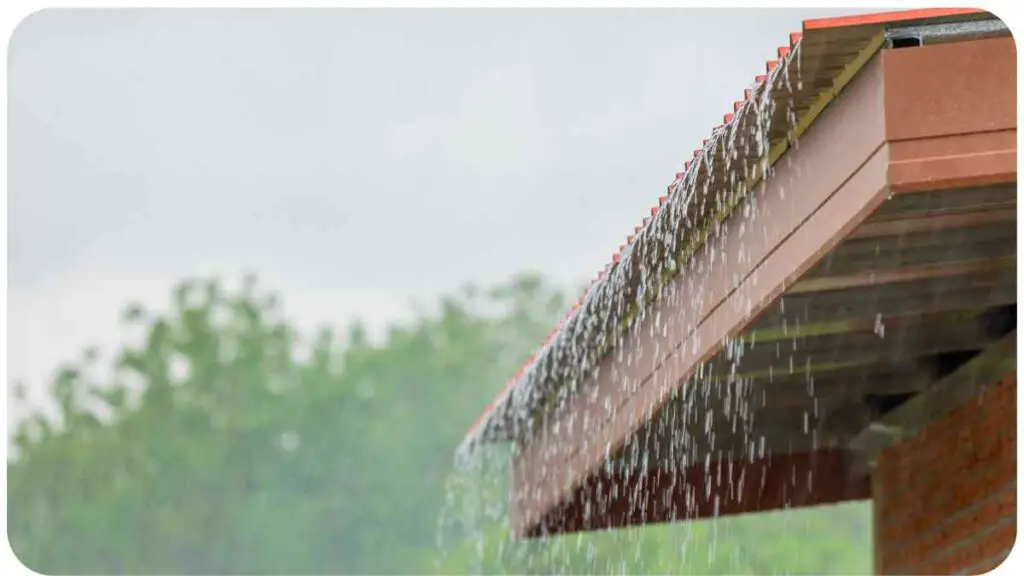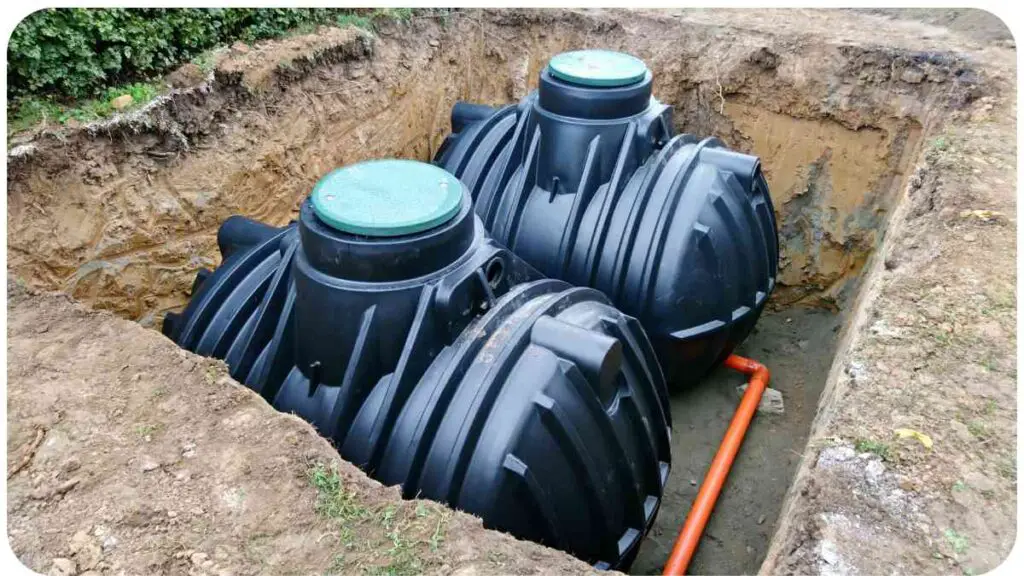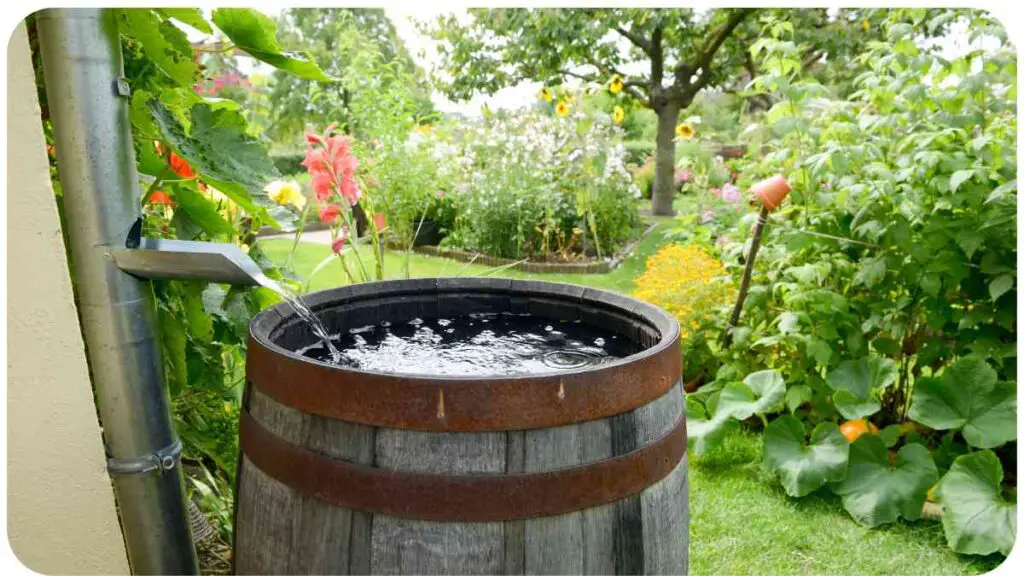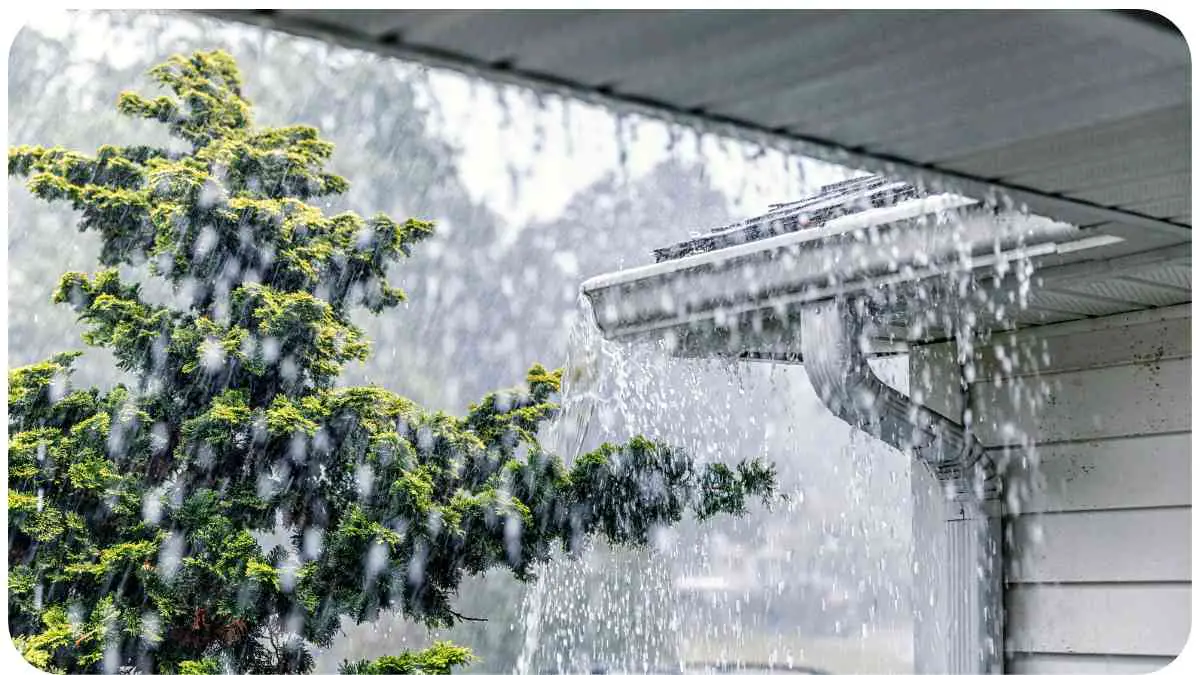Rainwater harvesting is not only a sustainable choice but also a smart way to reduce your utility bills while promoting eco-friendliness. However, like any other system, it can run into problems that hinder its efficiency. Drawing from my extensive experience as a rainwater harvesting professional, this article unfolds the common issues you might face and how to troubleshoot them to get your system back on track.
| Takeaways |
|---|
| Understand the importance and benefits of rainwater harvesting for sustainability and cost savings. |
| Familiarize with the essential components of a rainwater harvesting system: catchment area, conveyance system, and storage facilities. |
| Learn about common issues like blockages, leaks, inadequate filtration, and improper storage, along with their troubleshooting tips. |
| Recognize the significance of regular maintenance in preventing issues and ensuring the system’s functionality. |
| Gain insights on enhancing system efficiency through proper design, quality materials, and professional installation. |
| Be informed about local regulations and compliance requirements for setting up and maintaining a rainwater harvesting system. |
| Understand the benefits of seeking professional consultation for a comprehensive assessment and ensuring compliance. |
| Learn from real-world examples of troubleshooting common issues to improve system efficiency. |
| Realize the importance of investing in quality components from reliable suppliers for long-term functionality and efficiency. |
| Engage with community initiatives, educational resources, and stay updated on future trends in rainwater harvesting for a holistic approach. |
Understanding the Importance of Rain Harvesting

Rainwater harvesting is a time-tested solution to water scarcity and a step towards sustainable living. Over the years, I have seen how effectively managing rainwater can lead to self-sufficiency and even become a community endeavor. It’s not just about collecting rain; it’s about managing a crucial resource wisely.
If you’re passionate about sustainability, consider these green home tips to complement your rain harvesting system’s efficiency. Learn more about creating a green and sustainable home today!
Table: Benefits of Rain Harvesting
| Benefit | Description |
| Water Conservation | Reduces dependence on municipal water or groundwater. |
| Cost Savings | Lower water bills as you utilize freely available rainwater. |
| Environmental Impact | Lessens the strain on local water resources. |
| Flood Mitigation | Reduces runoff, which can help in preventing local flooding. |
Essential Components of a Rain Harvesting System
A well-designed rain harvesting system comprises various components, each serving a unique purpose. Understanding these components is the first step towards troubleshooting any issues that arise.
Catchment Area
The catchment area is where rainwater is collected, usually rooftops or other flat, impermeable surfaces. The material and slope of the catchment area significantly affect the quantity and quality of harvested rainwater. Throughout my career, I’ve noticed that a well-maintained catchment area can drastically improve the system’s efficiency.
Conveyance System
This includes gutters, downspouts, and pipes that direct water from the catchment area to the storage facility. A common issue I have encountered in many systems is the accumulation of debris in the conveyance system, which can lead to blockages.
Storage Facilities
The heart of the rain harvesting system, where collected water is stored for future use. It’s essential to choose storage solutions that prevent algae growth and keep the water clean and safe.
Table: Key Components and Their Functions
| Component | Function |
| Catchment Area | Collects rainwater from a specified area. |
| Conveyance System | Transports collected water to the storage facility. |
| Storage Facilities | Stores collected water for future use. |
The depth of understanding and regular interaction with rain harvesting systems has enriched my practical knowledge, which I aim to share through this article to help you overcome common hurdles in maintaining an efficient rainwater harvesting system.
Thinking of minimizing waste in your life? Explore the benefits of zero-waste living and how it relates to responsible water usage. Dive into the world of zero-waste living for insights.
Common Issues and Troubleshooting

Rainwater harvesting systems, though largely self-sufficient, can run into a variety of issues. These problems often stem from lack of maintenance, poor design, or external factors like extreme weather conditions. Let’s delve into the common problems and how to troubleshoot them.
Blockages and Leaks
Blockages are a frequent issue I have come across in many systems. Leaves, twigs, and other debris can clog the conveyance system, preventing water from reaching the storage tank. Similarly, leaks can occur over time due to wear and tear or poor installation, leading to water wastage.
Troubleshooting Tips:
- Regular Inspection: Check for blockages in the gutters and downspouts, especially after a storm.
- Proper Installation: Ensure that the conveyance system is installed with a slight slope to prevent water stagnation.
- Use of Gutter Guards: Install gutter guards to prevent debris accumulation.
Inadequate Filtration
Inadequate filtration can lead to contaminated water, making it unsafe for use. Over the years, I’ve realized the importance of a good filtration system in maintaining water quality.
Travel sustainably and protect our environment. Plan your eco-friendly adventures with our comprehensive guide to sustainable travel. Discover more about sustainable travel and make a positive impact
Troubleshooting Tips:
- Upgrade Filters: If the existing filters are not effective, consider upgrading to a more robust filtration system.
- Regular Cleaning: Clean the filters regularly to ensure they function correctly.
Improper Storage
Improper storage can lead to various issues like algae growth, contamination, or even damage to the storage tank.
Troubleshooting Tips:
- Dark Storage Tanks: Use dark-colored tanks or cover them to prevent sunlight exposure, which can lead to algae growth.
- Regular Cleaning: Ensure the tank is cleaned periodically to prevent sediment buildup.
Table: Common Issues and Solutions
| Issue | Cause | Solution |
| Blockages | Debris accumulation | Regular inspection, Use of gutter guards |
| Leaks | Wear and tear, Poor installation | Inspect and replace damaged sections |
| Inadequate Filtration | Poor quality filters | Upgrade filters, Regular cleaning |
| Improper Storage | Sunlight exposure, Lack of cleaning | Use dark storage tanks, Regular cleaning |
Regular Maintenance: The Key to Functionality
Maintaining your rainwater harvesting system is essential to ensure it functions correctly over the years. A well-maintained system not only provides clean, usable water but also minimizes the likelihood of problems arising.
Cleaning and Repairing
Regular cleaning of all components, especially the conveyance system and storage tanks, is crucial. Repairing any damaged or worn-out parts promptly can prevent further damage and ensure the system remains functional.
Maintaining a green building? Learn how to address issues like leaky living roofs. Our guide on green building troubleshooting has you covered. Explore solutions for leaky living roofs now
System Upgrades
Upgrading your system with better components or additional features like first flush diverters, can significantly improve its efficiency and longevity.
Table: Maintenance Checklist
| Task | Frequency | Benefit |
| Gutter Cleaning | Every 6 months or after a storm | Prevents blockages and water contamination |
| Filter Cleaning | As per manufacturer’s instructions | Ensures clean water |
| Tank Cleaning | Annually | Prevents sediment buildup and contamination |
| System Inspection | Annually | Identifies any wear, tear or damage |
Expert Advice on Enhancing System Efficiency
Having worked on numerous projects over the years, I’ve garnered valuable insights on how to enhance the efficiency of rainwater harvesting systems. Here are some expert tips:
Design Considerations
The design of your rainwater harvesting system plays a pivotal role in its efficiency. Proper planning, considering the local climate and your water needs, can lead to a more effective system.
Material Selection
Choosing durable, high-quality materials for your system components can significantly extend the lifespan of your rainwater harvesting system.
Professional Installation and Inspection
Professional installation ensures that the system is set up correctly, minimizing the risk of future problems. Regular professional inspections can also help in identifying and rectifying issues before they escalate.
Is your solar panel system not charging as expected? Get expert insights into solar panel troubleshooting and maximize your energy production. Find solutions to your problems with solar panel charging issues.
Table: Tips for Enhancing Efficiency
| Tip | Explanation |
| Proper Design | Tailor the system design to local conditions and water needs |
| Quality Materials | Opt for durable, high-quality materials |
| Professional Services | Seek professional installation and regular inspections |
The blend of theoretical knowledge and practical experience is instrumental in not just troubleshooting but also enhancing the efficiency of your rainwater harvesting system. The tips shared above are distilled from years of hands-on experience in the field, ensuring you get the most out of your system.
Understanding Local Regulations and Compliance

Adhering to local regulations and ensuring compliance is a crucial aspect of setting up and maintaining a rainwater harvesting system. It’s imperative to understand and follow the laws and guidelines set forth by local authorities.
Permitting and Zoning
Before setting up a rainwater harvesting system, it’s essential to acquire the necessary permits. Zoning laws may also affect where and how you can install your system.
Water Quality Standards
Depending on the intended use of the harvested rainwater, adhering to water quality standards is paramount to ensure safety and compliance.
Table: Local Regulation Checklist
| Requirement | Description |
| Permits | Acquire the necessary permits before installation |
| Zoning Compliance | Ensure the system complies with local zoning laws |
| Water Quality | Meet the required water quality standards for intended use |
Benefits of Professional Consultation
Seeking professional consultation can provide a wealth of benefits, ensuring that your rainwater harvesting system is designed, installed, and maintained correctly.
Expertise and Experience
Professionals bring a wealth of expertise and experience, ensuring that your system is efficient and compliant with local regulations.
Comprehensive Assessment
A professional can provide a comprehensive assessment of your needs, the local climate, and other factors to design a system that meets your requirements.
Table: Benefits of Professional Consultation
| Benefit | Description |
| Expertise | Access to professional knowledge and experience |
| Customized Assessment | Tailored solutions to meet your specific needs |
| Compliance Assurance | Ensures the system complies with local regulations |
Real-world Examples of Troubleshooting
Real-world examples can provide valuable insights into the common issues faced by others and how they were resolved.
Case Study 1: Overcoming Blockages
In one instance, a client was facing recurrent blockages in the conveyance system. Upon professional inspection, it was found that a lack of gutter guards and an abundance of overhanging trees were the culprits. Installing gutter guards and trimming back the trees resolved the issue.
Case Study 2: Improving Filtration
Another case involved a system that was delivering water with a lot of sediments. By upgrading to a more robust filtration system, the water quality was significantly improved, making it suitable for its intended use.
Table: Summary of Case Studies
| Case Study | Problem | Solution |
| 1: Overcoming Blockages | Recurrent blockages | Installing gutter guards, Trimming trees |
| 2: Improving Filtration | Poor water quality | Upgrading to a robust filtration system |
Investing in Quality Components
Investing in quality components is a wise decision for the long-term functionality and efficiency of your rainwater harvesting system.
Reliable Suppliers
Choosing reliable suppliers ensures that you get high-quality, durable components that will serve you well over the years.
Durability and Performance
Quality components are typically more durable and perform better, ensuring that your system remains functional and efficient.
Table: Recommended Suppliers and Products
| Supplier | Product | Description |
| RainHarvest Systems | First Flush Diverter | Diverts the initial dirty rainwater |
| National Tank Outlet | Poly-Mart Rain Harvesting Tank | Durable storage tank for harvested rainwater |
| Gutter Supply | Gutter Guards | Prevents debris accumulation in gutters |
The emphasis on quality is a reflection of the understanding that a good rainwater harvesting system is a long-term investment that should stand the test of time, delivering value far beyond its initial cost.
Further Reading
Typical Problems with a Rainwater Harvesting System: A detailed look at common issues faced by rainwater harvesting systems and how to mitigate them.
Common Problems with Rainwater Harvesting Tanks: An article exploring the challenges associated with rainwater harvesting tanks and offering solutions.
7 Reasons Why Rainwater Harvesting is Done: This piece discusses the motivations behind rainwater harvesting and its numerous benefits.
FAQs
What could be the reason my rainwater harvesting system isn’t working efficiently?
There could be several reasons including blockages, leaks, inadequate filtration, or improper storage which might affect the efficiency of your rainwater harvesting system. Regular maintenance and professional inspections can help identify and fix these issues.
How can I enhance the efficiency of my rainwater harvesting system?
Efficiency can be enhanced through proper design, selecting quality materials, professional installation, and ensuring regular maintenance. Also, adhering to local regulations and upgrading system components can contribute to better efficiency.
Are there any local regulations I should be aware of when setting up a rainwater harvesting system?
Yes, local regulations may pertain to permits, zoning compliance, and water quality standards. It’s advisable to check with local authorities or seek professional consultation to ensure compliance.
What are the key components of a rainwater harvesting system?
The key components include the catchment area, conveyance system, and storage facilities. Each of these components plays a critical role in collecting, transporting, and storing rainwater.
How often should I perform maintenance checks on my rainwater harvesting system?
Regular maintenance checks are crucial for the system’s longevity and efficiency. It’s advisable to clean gutters every six months or after a storm, clean filters as per manufacturer’s instructions, clean the tank annually, and have a professional inspection annually as well.

I am Hellen, I’ve been passionate about sustainability for as long as I can remember. It’s something that my mom taught me from a young age, and it’s something that has shaped my life in so many ways.

